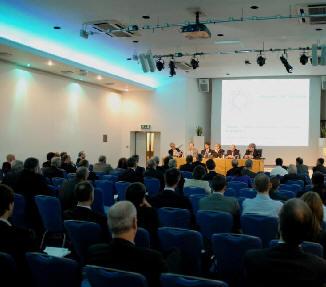 |
|
|
|
|
|
|||
|
By |
||||
 |
April 25, 2010 - The Royal Aeronautical Society’s (RAeS) annual
conference concluded Thursday. The final presentations highlighted the
contrast between the enormous potential for future wealth creation,
exports and high-tech employment that could be generated in the The conference speakers, representing leading global businesses, academic institutions and aviation and defense organizations, provided a wide ranging series of presentations and Q&A sessions. The topics discussed stretched from the recent air travel crisis caused by volcanic ash to future prospects for safer and more environmentally friendly air traffic management, air finance, the expanding prospects for British involvement in space access and the changing needs and threats in defense. |
|||
|
A thought-provoking presentation by Society Past President Professor Ian Poll, looked at how advances in radical new aerodynamic solutions for future civil aircraft might impact on airport design, airline operations and the environment. This considered performance gains and improved operating efficiencies resulting from blended wing designs set against competing factors, including developed conventional designs and implications for airport infrastructure. A controversial suggestion was that longer airport runways could allow more environmentally friendly air traffic patterns to be adopted, which might hold the promise of ending cloud-forming contrails at high altitude.
Issues relating to the forthcoming Strategic Defense Review were
considered at length. Sir Brian Burridge, Chairman of the RAeS Learned
Society Board, pointed out that
New threats to the all-important digital connectivity of the global
community included cyber and space access attacks, and these could, if
not adequately protected, bring business, banking, travel and defense
operations to a halt. The need to protect against future vulnerability
of energy supplies was another area which indicated why defense threat
analysis of the past was no longer appropriate in a fast-moving,
technology-driven world.
The two day conference took place at |
||||
